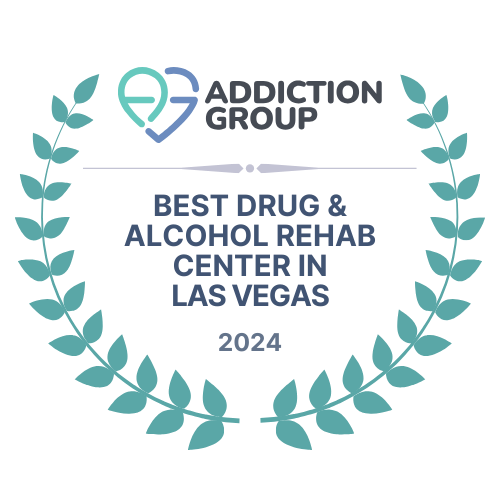Understanding Addiction Treatment Medications
Understanding the differences between Suboxone and Methadone is essential for those seeking effective addiction treatment. Both medications play crucial roles in medication-assisted treatment (MAT) for opioid dependence, and we want to delve into how these two options compare.
Suboxone vs. Methadone Overview
Suboxone and Methadone are widely used medications in the treatment of opioid addiction. Both serve to block the effects of other opioids by attaching to opioid receptors in the brain, which aids in alleviating withdrawal symptoms associated with opioid discontinuation.
| Medication | Type | Abuse Potential | Accessibility |
|---|---|---|---|
| Suboxone | Partial opioid agonist | Lower | More accessible; can be prescribed in office |
| Methadone | Full opioid agonist | Higher | Controlled and requires specialized clinics |
Suboxone has a lower risk of misuse due to its partial agonist nature, making it a safer option in many cases. In addition, Suboxone is more flexible in terms of treatment accessibility; it can be prescribed by various healthcare providers without the necessity of visiting a specialized clinic.
Mechanism of Action Comparison
The mechanisms of action for Suboxone and Methadone differ notably. Methadone acts as a full opioid agonist, providing significant relief from withdrawal symptoms but also carrying a higher potential for misuse and dependency. Suboxone, on the other hand, is a partial opioid agonist. This means it activates the opioid receptors but does so less intensely than full agonists like Methadone. This action helps to mitigate cravings and withdrawal symptoms while reducing the overall risk of abuse (NIDA).
| Medication | Mechanism | Effect on Withdrawal Symptoms | Risk of Overdose |
|---|---|---|---|
| Suboxone | Partial agonist | Reduces cravings, mild withdrawal relief | Lower risk |
| Methadone | Full agonist | Strong cravings relief | Higher risk |
Each medication has its own unique profile of effectiveness and risk. For example, while Methadone may help some individuals remain in treatment for longer durations, the partial agonist nature of Suboxone tends to provide additional safety (PubMed Central).
Choosing between Suboxone and Methadone is a personal decision that should be based on individual circumstances and planning. Patients interested in understanding how medications fit into their recovery journey can read more about how medication-assisted treatment (MAT) supports long-term sobriety. Understanding each option better equips us to make an informed choice.
Considerations for Choosing the Right Medication
Choosing the right medication for opioid addiction treatment is essential for effective recovery. In this section, we will discuss the effectiveness of Suboxone and Methadone, along with the potential side effects and risks associated with each medication.
Effectiveness of Suboxone
Suboxone is a combination of buprenorphine and naloxone, making it a viable option for individuals seeking to overcome opioid addiction. Research indicates that Suboxone can effectively help individuals reduce opioid use and manage withdrawal symptoms (NIDA). One of the significant advantages of Suboxone is its accessibility; it can be prescribed by many healthcare providers, allowing for greater flexibility in treatment.
For individuals who may only require part-time treatment or are new to medication-assisted treatment (MAT), Suboxone can be a suitable choice. The ability to fill prescriptions without the need to visit specialized clinics can empower patients to take control of their recovery journey. Additionally, we recognize the importance of how medication-assisted treatment (MAT) supports long-term sobriety.
Effectiveness of Methadone
Methadone is another prevalent treatment option for opioid dependency and is also known for its effectiveness in helping individuals reduce opioid use. Studies have shown that Methadone may assist some people in remaining in treatment for extended periods (WebMD). The comprehensive treatment process often involves regular visits to specialized clinics which can be beneficial for those who prefer a structured setting.
While Methadone has proven effective, it tends to be less accessible than Suboxone due to the requirement of specialized treatment centers for prescriptions. However, Methadone’s potential to support longer-term treatment can be a deciding factor for some individuals seeking stability in their recovery.
Side Effects and Risks
The side effects of both Suboxone and Methadone are comparable, with some research indicating that side effects may be more severe with Methadone (Medical News Today). Common side effects for both medications include:
| Side Effects | Suboxone | Methadone |
|---|---|---|
| Drowsiness | Yes | Yes |
| Nausea | Yes | Yes |
| Constipation | Yes | Yes |
| Headaches | Yes | Yes |
| Withdrawal Symptoms | Possible | Possible |
| Dependence Risk | Lower risk | Higher risk |
While both medications are effective, it’s crucial to consult healthcare professionals to determine the best fit based on individual needs and health conditions. Understanding the risks and side effects can help us make informed decisions in our treatment journey. For more information on treatment options, we can explore detox and withdrawal management: first steps to recovery.
Treatment Accessibility and Flexibility
When considering treatment options for addiction, understanding the accessibility and flexibility of different medications is essential. Both Suboxone and Methadone offer varying degrees of accessibility, with unique benefits that may cater to our needs.
Suboxone Treatment Accessibility
Suboxone is often seen as more accessible than Methadone. Unlike Methadone, which typically requires visits to specialized treatment clinics, Suboxone can be prescribed by many healthcare providers, including doctors, nurse practitioners, and physician assistants. This flexibility means we often have a wider range of options for obtaining our medication.
In light of the COVID-19 pandemic, prescribing Suboxone via telehealth services has become increasingly common. This telehealth approach allows us to receive care without needing to travel, thus reducing barriers to treatment and helping us maintain our recovery journey. This is especially important for those looking for discreet options while reintegrating into daily life. For comprehensive insights into what to expect from our treatment, check our article on what to expect from evidence-based addiction treatment at Vegas Stronger.
Methadone Treatment Process
Methadone treatment operates differently from Suboxone. Typically, it requires patients to visit specialized clinics where they can receive their medication. This structured program may work well for some individuals who appreciate the routine and support provided by these facilities. However, it can also present challenges for those with limited transportation options or scheduling conflicts.
While Methadone can be effective in helping some individuals stay in treatment longer, it requires a commitment to regular visits, which may not be suitable for everyone. Understanding our personal situation can help us determine whether this structured approach is the right fit for us. We encourage those considering Methadone treatment to learn more about detox and withdrawal management as the first steps to recovery.
Telehealth Advantages
Telehealth has become a game-changer in addiction treatment and care. With the ability to connect with healthcare providers remotely, we can access medications with greater convenience and privacy. Telehealth not only increases patient satisfaction but also helps keep us engaged in treatment, especially during times when traditional barriers, such as stigma, may deter us from seeking help.
This modern approach to healthcare means we can schedule appointments that fit into our lives, making it easier to adhere to our treatment plans. For additional insights into how medical and counseling services can be effectively combined, visit our article on why Vegas Stronger combines medical and counseling services.
Ultimately, accessibility and flexibility are key components to consider when choosing between Suboxone and Methadone for our treatment journey. Each option has its advantages, and understanding these can help us make informed decisions about our paths to recovery.
Special Considerations and Patient Profile
When it comes to choosing the right medication for opioid use disorder, we need to consider specific populations and their unique needs, especially pregnant women, breastfeeding mothers, and individuals needing pain management.
Pregnant Women and Medication Choice
Both methadone and buprenorphine are recommended for pregnant women with opioid use disorder. Studies have indicated that treating opioid dependence during pregnancy is vital for both maternal and fetal health. Importantly, buprenorphine treatment may lead to better health outcomes for infants than methadone treatment (NIDA). As we evaluate our options, we must lean towards medications that support both the mother’s recovery and the baby’s health.
| Medication | Recommended for Pregnant Women | Infant Health Outcomes |
|---|---|---|
| Methadone | Yes | Variable outcomes |
| Buprenorphine | Yes | Generally better outcomes |
Safety for Breastfeeding
We understand the importance of breastfeeding for bonding and improving health outcomes for infants. Fortunately, medications for opioid use disorder, including both methadone and buprenorphine, are considered safe for breastfeeding mothers and their infants. According to research, breastfeeding can help ease symptoms of neonatal opioid withdrawal syndrome and promote better health for the baby (NIDA). For mothers in treatment, breastfeeding offers benefits not only for the child but also supports their recovery journey.
| Medication | Safe for Breastfeeding | Benefits to Infant |
|---|---|---|
| Methadone | Yes | Helps ease withdrawal symptoms |
| Buprenorphine | Yes | Supports bonding, improves outcomes |
Pain Management Considerations
For individuals who experience both opioid use disorder and chronic pain, it is essential to tailor our approach. Methadone can address pain while treating addiction, making it suitable in complex cases. Buprenorphine, while effective for reducing opioid cravings, may be less effective for severe pain management. As we develop treatment plans, considering the patient’s pain management needs along with effective addiction treatment is crucial.
| Medication | Pain Management Efficacy | Addiction Treatment |
|---|---|---|
| Methadone | High | Effective for opioid use disorder |
| Buprenorphine | Moderate | Effective for reducing cravings |
By carefully considering the unique profiles of pregnant and breastfeeding women, as well as patients needing pain management, we can make informed decisions regarding opioid use disorder treatment, ensuring a tailored approach that promotes the best outcomes for both mothers and their children. For further insights into treatment options, visit our page on what to expect from evidence-based addiction treatment at Vegas Stronger.
Choosing between Methadone and Suboxone
Comparing Addiction Treatment Efficacy
When considering suboxone vs. methadone: what is the right fit for you?, it is essential to evaluate the effectiveness of both medications in treating opioid use disorder (OUD). Studies indicate that both methadone and buprenorphine (the active component in Suboxone) can be equally effective in helping individuals decrease their opioid use. Methadone may have the advantage of keeping some patients in treatment for more extended periods.
In a 2014 study, both methadone and Suboxone showed significant improvements over placebos regarding treatment retention, reduction of illicit drug use, and lower mortality rates. While both medications are effective, methadone was shown to be slightly more effective for treatment retention (American Addiction Centers). Below is a comparison table summarizing these findings:
| Medication | Effectiveness in Treatment Retention | Reduction in Illicit Drug Use | Impact on Mortality |
|---|---|---|---|
| Methadone | Higher | Significant | Lower |
| Suboxone | Slightly lower | Significant | Lower |
Addiction Treatment Success Rates
Understanding the success rates of treatment options is vital in our selection process. Evidence shows that both methadone and buprenorphine contribute to reducing the risk of overdose and other opioid-related fatalities when compared to other treatment methods (American Addiction Centers).
Moreover, methadone maintenance therapy has demonstrated substantial effectiveness in reducing opioid use overall and has proven to be a critical intervention for individuals struggling with OUD (PubMed Central).
We encourage considerations such as personal experiences with medications, lifestyle factors, and long-term goals. We recognize that both treatment options have their place in effective addiction treatment, and understanding their comparative success rates can guide informed decisions. For more information on tailored treatments, visit our article on tailoring addiction treatment to fit each substance type.
Choosing between methadone and Suboxone ultimately comes down to individual needs and circumstances, emphasizing the importance of personalized treatment plans that we, at Vegas Stronger, strive to create.
Factors Influencing Medication Interactions
When navigating addiction treatment, especially deciding between Suboxone and Methadone, understanding factors that influence medication interactions is essential. We need to be well-informed about potential drug and alcohol interactions, as well as the metabolism of these medications, to ensure safe and effective treatment.
Potential Drug Interactions
Certain medications can interact when taken with either Suboxone or Methadone, impacting their effectiveness and safety. For instance, combining buprenorphine (the active ingredient in Suboxone) with Methadone can reduce the analgesic effect of Methadone and increase the risk of irregular heart rhythms. Individuals with heart conditions or electrolyte disturbances may experience significant withdrawal symptoms due to these interactions (Drugs.com).
| Drug Combination | Interaction Effects |
|---|---|
| Methadone + Suboxone | Reduced analgesic effect, increased withdrawal symptoms |
| Methadone + Other Opioids | Incomplete pain relief |
| Buprenorphine + Other Opioids | Inadequate pain relief |
Alcohol Interactions
Both Methadone and Suboxone have severe reactions with alcohol. Utilizing alcohol or medications containing alcohol during treatment with Methadone can lead to heightened nervous system side effects, including dizziness and respiratory depression. For individuals undergoing treatment with buprenorphine, it is also critical to avoid alcohol to prevent similar side effects and potential fatalities. We recommend consulting with a healthcare provider for safe medication management during addiction treatment.
Methadone and Buprenorphine Metabolism
Understanding how Methadone and buprenorphine are metabolized can inform treatment decisions. Methadone is primarily metabolized in the liver, and certain interactions can elevate blood levels, leading to serious complications. For instance, grapefruit juice can increase Methadone blood levels, potentially causing life-threatening heart conditions. It is vital to discuss all medications and dietary habits with a healthcare professional to tailor the treatment effectively.
In making the best choice between Suboxone and Methadone, we underscore the importance of being aware of these interactions. For comprehensive insights, consider our other resources such as what to expect from evidence-based addiction treatment at Vegas Stronger and how medication-assisted treatment (MAT) supports long-term sobriety.

















